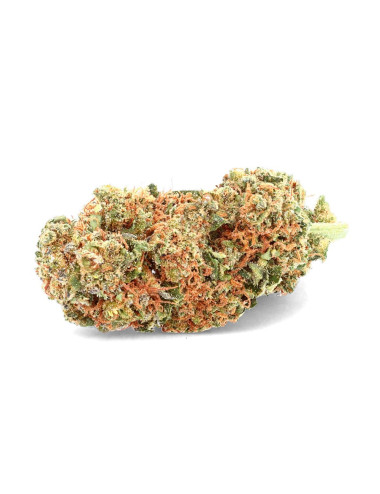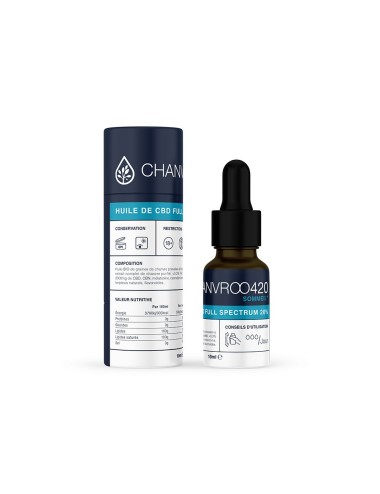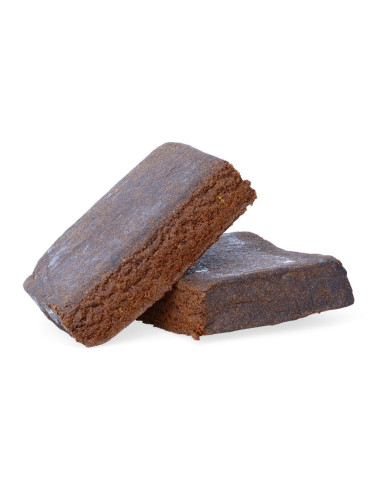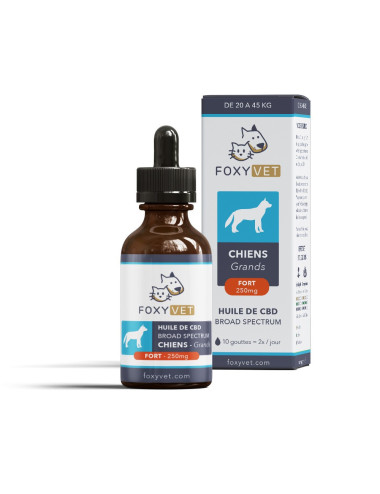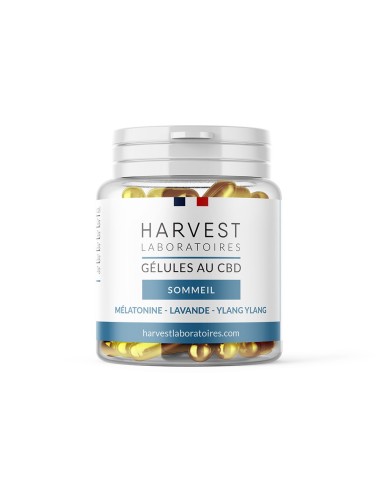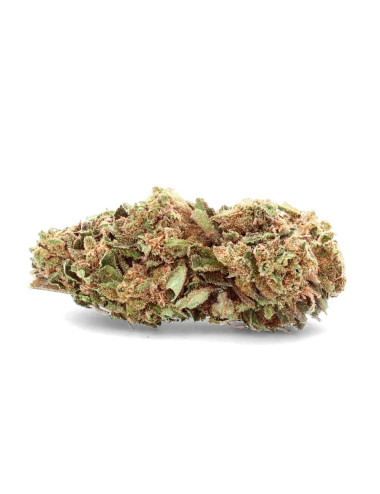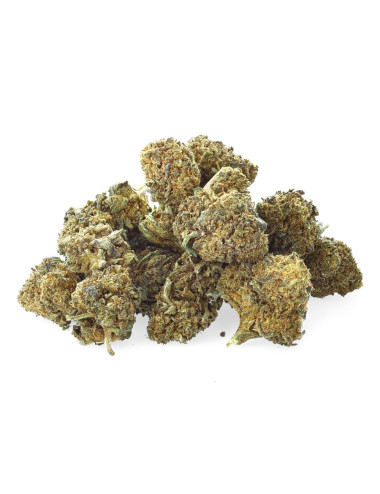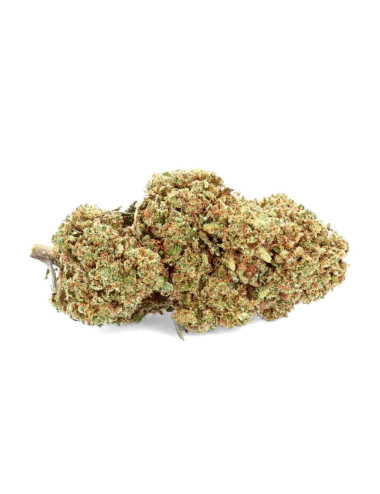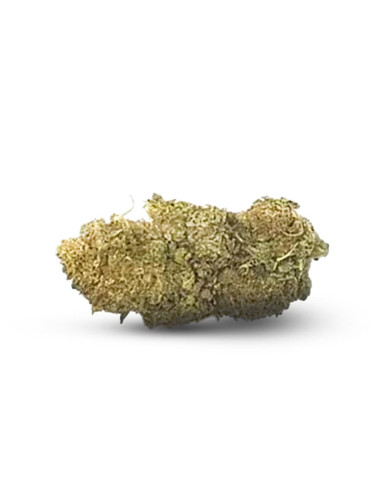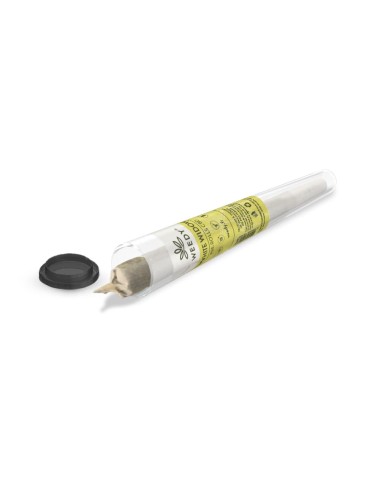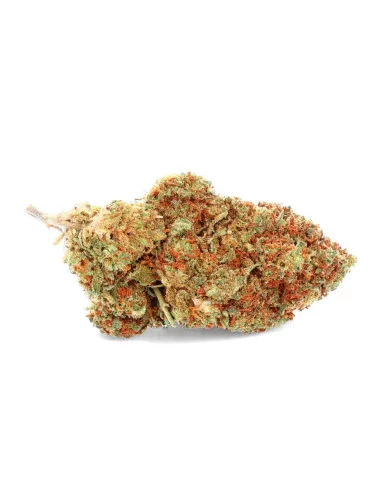Discover CBD cannabidiol
As you peruse this page, you, dear readers, probably aspire to clarify your knowledge of CBD. At Weedy.co.uk, we want to share with you, simply and succinctly, relevant information on the intriguing compound cannabidiol, or CBD. This chemical component, native to the cannabis plant, belongs to the cannabinoid family but, rest assured, is non-psychoactive, unlike its cousin THC, known for its consciousness-altering effects.
The potential benefits of CBD are manifold. They can, in fact, extend to alleviating anxiety and depression, reducing pain and inflammation, and improving sleep. We find it particularly useful for various medical conditions such as epilepsy, Crohn's disease and schizophrenia. However, we would like to point out that research into the therapeutic properties of CBD is still ongoing and, therefore, results may differ from person to person.
Slowly transitioning back to its origins, CBD has a rich history, particularly in Asia, where it has been used for medicinal purposes for millennia. Nevertheless, it was only in 1940 that its chemical structure was first isolated. In recent decades, research into cannabinoids, and CBD in particular, has progressed considerably. This advance in knowledge of its mechanism of action has widened the availability of various CBD-based products, such as CBD oils, capsules and even cosmetic creams.
As CBD experts, we see cannabidiol as a molecule full of promise, rich in as yet largely untapped therapeutic potential. We invite you to continue your exploration and discover for yourself the many benefits CBD has to offer.
What is CBD?
Definition of CBD
Cannabidiol, more commonly known as CBD, is a natural compound found in the cannabis plant and its variety, hemp. It is one of many cannabinoids present in these plants, and stands out for its non-psychotropic properties, unlike THC (tetrahydrocannabinol), which is responsible for the psychoactive effects associated with cannabis consumption.
Chemical structure of CBD
The CBD molecule has a chemical structure very similar to that of THC. It is made up of 21 carbon atoms, 30 hydrogen atoms and 2 oxygen atoms. This similarity partly explains the interactions between CBD and our body's endocannabinoid system. Nevertheless, CBD has no psychoactive effects, i.e. it does not affect the user's perception or psychological state.
Origin of CBD
Le CBD est extrait de la plante de cannabis et notamment de sa variété, le chanvre (cannabis sativa). Le chanvre industriel est en effet particulièrement riche en cannabidiol et présente des concentrations très faibles de THC (<0,2% en Europe), ce qui en fait une source privilégiée pour l'extraction du CBD.
History of CBD
The use of the cannabis plant dates back thousands of years, but it was only in the middle of the 20th century that the first scientists began to study the various chemical compounds present in this plant. CBD was first isolated in 1940 by an American researcher, Roger Adams, and its chemical structure was determined a few years later by a South African team led by Ralph Mechoulam.
Growing industrial hemp
Industrial hemp is grown mainly for its fibers and seeds, but also for CBD production. The hemp varieties used are selected for their low THC content and high cannabidiol concentrations. Europe requires hemp to be grown with a maximum THC content of 0.2%, while in the USA, the limit is set at 0.3%.
CBD extraction
Several CBD extraction methods exist, some of which preserve the integrity of other compounds present in the plant, such as terpenes or other cannabinoids. The main extraction methods include :
- CO2 extraction: a sophisticated technique that uses carbon dioxide to separate CBD from other plant components.
- Oil extraction: this method involves macerating CBD-rich plant material in an oil, often olive or coconut, to transfer its active ingredients into the oil.
- Solvent extraction: this method uses solvents to dissolve and recover the plant's active compounds. Ethanol is commonly used as a solvent, but more aggressive solvents such as hexane can also be employed.
Legality of CBD
The legality of CBD varies from country to country. Indeed, each legislation treats the subject differently, which can lead to some controversy and confusion.
CBD and French legislation
In France, CBD is considered legal if extracted from authorized hemp varieties containing less than 0.2% THC. However, the marketing of products containing CBD is subject to certain rules. For example, only products derived from the plant's seeds and fibers are authorized for use as dietary supplements or cosmetics. Preparations containing CBD must not promote therapeutic claims, as cannabidiol is not a medicine.
Europe and CBD
Throughout the European Union, CBD is authorized on condition that it is extracted from hemp varieties containing less than 0.2% THC. Nevertheless, each member country may have its own regulations concerning the sale and use of CBD-containing products, so it's important to find out about local laws before consuming or purchasing.
Legality of CBD in the United States
In the United States, the legality of CBD differs according to state and federal legislation. Since the 2018 Farm Bill, CBD derived from industrial hemp containing less than 0.3% THC is legal at federal level. However, some states have adopted more restrictive laws regarding CBD, particularly with regard to the marketing and possession of these products.
The properties of CBD
Anxiolytic effects of CBD
CBD has been shown to possess anxiolytic properties, meaning it can help reduce anxiety and stress. Several studies have highlighted its potential in the treatment of various anxiety disorders:
- Generalized anxiety disorder (GAD): a study of GAD patients showed that CBD significantly reduced anxiety symptoms.
- Post-traumatic stress disorder (PTSD): CBD has also shown promising results in the treatment of PTSD, notably by helping patients to control their traumatic memories and reduce the associated emotional impact.
- Social anxiety disorder (SAD): preliminary research suggests that CBD may help people with SAD reduce their anxiety in specific social situations.
Thus, the anxiolytic effects of CBD could offer an interesting alternative to traditional drug treatments in the management of anxiety.
Anti-inflammatory effects
Numerous studies have demonstrated CBD's anti-inflammatory properties, which may help treat a variety of inflammation-related conditions. In addition to its aforementioned analgesic effects, studies have also suggested that CBD may play a beneficial role in the management of chronic pain. For example, a systematic review of 18 clinical trials concluded that the use of cannabinoids, including CBD, could help improve the quality of life and functional abilities of patients suffering from chronic non-cancer pain.
CBD's anti-inflammatory effects could also help alleviate some of the pain associated with persistent inflammation, such as that caused by arthritis or fibromyalgia. By targeting the receptors of the endocannabinoid system involved in the inflammatory response, CBD could potentially relieve patients suffering from chronic pain and offer them greater comfort in their daily lives.
Analgesic effects
CBD is also being studied for its pain-relieving properties. Several studies have highlighted its analgesic potential:
- Neuropathic pain: CBD seems to help alleviate the pain associated with certain nerve pathologies, such as multiple sclerosis or diabetic neuropathy.
- Inflammatory pain: a study on rats showed that CBD administration significantly reduced the pain and inflammation associated with arthritis.
- Migraines: some preliminary research indicates that CBD may be useful in the management of chronic migraines, although more studies are needed to confirm these findings.
The analgesic effects of CBD could therefore be an interesting non-opioid option for relieving various types of pain.
Fighting epilepsy
One of the most promising areas of CBD research is in the treatment of epilepsy. Several studies have demonstrated that CBD can help reduce the frequency and intensity of epileptic seizures in patients with forms resistant to conventional treatments:
- Dravet syndrome: a clinical study showed that CBD treatment significantly reduced convulsive seizures in children suffering from Dravet syndrome, a form of severe epilepsy mainly affecting young children.
- Lennox-Gastaut syndrome: in a study involving patients with this syndrome, the use of CBD as a complementary treatment led to an average reduction in the number of atonic seizures (sudden falls) of 43.9%.
In view of these encouraging results, CBD has been approved by some regulatory agencies, such as the FDA in the USA, for the treatment of certain forms of epilepsy.
Treatment of sleep disorders
Last but not least, CBD is also being studied for its potential to treat sleep disorders. Several research studies have suggested that CBD supplementation could :
- Improve sleep quality: some studies have shown that administering CBD to patients suffering from insomnia led to a significant improvement in the quality of their sleep.
- Regulating sleep-wake cycles: a study on rats revealed that CBD could help regulate phases of wakefulness and rest by acting on receptors involved in regulating sleep-wake cycles.
- Reduce nightmares: preliminary research has also suggested that CBD may help reduce the occurrence and intensity of nightmares in patients with REM sleep disorder.
CBD's effects on sleep could thus represent a promising new approach to the treatment of sleep disorders such as insomnia or parasomnias.
All in all, CBD offers interesting therapeutic potential in a variety of fields, thanks in particular to its anxiolytic, analgesic, anticonvulsant and sleep-enhancing effects. Although more studies are needed to confirm these findings and specify the optimal ways to use CBD, this molecule is attracting growing interest in medical research and could well offer new solutions to patients seeking treatment.
What disease does cbd treat?
First of all, before going any further in this paragraph, CBD does not cure any disease! If you're wondering what disease CBD cures, the answer is varied and above all simple: CBD doesn't cure. In fact, this compound has been shown to be effective in the treatment of various disorders such as rheumatism, osteoarthritis, multiple sclerosis, sleep disorders and depression. Here's a more in-depth analysis of the benefits of CBD on these various pathologies.
CBD and rheumatism
Rheumatism is a group of pains affecting joints, muscles and tendons. Numerous studies have shown that CBD possesses anti-inflammatory properties that canhelp reduce the pain associated with rheumatism. It acts as a natural analgesic without causing the major side effects often encountered with traditional drugs.
How does CBD help reduce pain and inflammation?
- It modifies pain perception by interacting with serotonin receptors.
- It reduces inflammation by inhibiting the production of certain pro-inflammatory molecules.
- It stimulates the regeneration of damaged tissue,
Thus, using CBD to treat rheumatism can bring significant relief to sufferers.
Osteoarthritis and the role of CBD
Osteoarthritis is a degenerative joint disease that generally affects the elderly. The progressive degradation of cartilage leads to pain, joint stiffness and chronic inflammation.
Several studies have revealed that CBD may be useful in the treatment of osteoarthritis by acting on several fronts:
- Its analgesic properties relieve pain.
- It reduces inflammation thanks to its powerful anti-inflammatory effects.
- It protects cartilage by inhibiting certain enzymes responsible for its degradation.
In short, CBD helps relieve the symptoms of osteoarthritis and may help limit its progression.
Multiple sclerosis: a complex disease fought with CBD
Multiple sclerosis (MS) is an autoimmune disease affecting the central nervous system. It causes destruction of the protective sheath surrounding the nerves - known as myelin - resulting in motor, sensory and cognitive disorders, as well as pain.
CBD is increasingly being used to treat MS symptoms because of its many benefits:
- It reduces the muscle spasms and stiffness that affect MS sufferers.
- It relieves the neuropathic pain often experienced by patients suffering from this disease.
- It soothes the inflammation of the central nervous system involved in MS.
In this way, CBD opens the way to a qualitative improvement for people with multiple sclerosis.
Sleep disorders: CBD as a natural solution
Sleep disorders are a group of problems affecting the quality and duration of nocturnal rest. They include insomnia, frequent night-time awakenings, nightmares and difficulty falling asleep.
CBD has relaxing and anxiolytic properties thatcan help people suffering from sleep disorders to find restorative rest :
- It helps you fall asleep by acting on the serotonin receptors involved in sleep regulation.
- It improves sleep quality by reducing the anxiety and stress that can disrupt nocturnal rest.
The use of CBD soothes the body and mind, promoting restful sleep.
Depression: a mood disorder combated by CBD
Depression is a mental disorder characterized by persistent sadness, loss of interest in daily activities, sleep disturbances and lack of energy. Traditional antidepressants have been shown to be effective in treating depression, but they can also cause undesirable side effects.
CBD is an interesting alternative for treating depression, because it has several advantages:
- It regulates mood through its interaction with receptors for serotonin, commonly known as the happy hormone.
- It alleviates the symptoms of depression without causing the side effects often observed with conventional antidepressants.
- It works quickly after consumption, unlike traditional medicines which generally take several weeks to take effect.
CBD appears to be a promising natural solution for improving the state of mind of people suffering from depression.
In conclusion, CBD is a compound with many therapeutic virtues that can be used to alleviate various conditions such as rheumatism, osteoarthritis, multiple sclerosis, sleep disorders and depression , but it does not cure these disorders. Its analgesic, anti-inflammatory and mood-regulating properties make CBD a promising natural solution to these conditions.
The different forms of CBD
CBD oils
CBD oil extraction methods
There are several methods for extracting CBD oil from cannabis plants:
- Solvent extraction: This method uses liquid solvents such as ethanol, butane or isopropyl alcohol to dissolve and isolate the cannabinoids from the plant material. The resulting solution is then evaporated, leaving behind a CBD-concentrated oil. Solvent extraction is the least expensive method, but can leave harmful residues if all the solvent is not properly removed.
- Supercritical CO2 extraction: This method uses carbon dioxide (CO2) at very high pressure and temperature to extract cannabinoids from the plant. Once the pressure is released, the CO2 returns to its gaseous state, leaving no residue behind. Although this method is more costly and complex, it is considered the safest and most effective for obtaining high-quality CBD oil.
- Oil extraction: This method uses vegetable oils (such as olive or coconut oil) to extract the cannabinoids. The plant material is heated with the oil so that the active compounds are absorbed by it. Oil extraction is simple and can be performed at home, but the resulting oil generally has a lower CBD concentration.
Cannabinoid quality and temperature control
The quality of the cannabinoids depends largely on temperature control during CBD oil extraction. Too high a temperature can lead to cannabinoid degradation, while too low a temperature will not ensure optimal extraction.
Supercritical CO2 extraction is distinguished by its precise temperature control, resulting in a cannabinoid-rich oil of superior quality.
The importance of purification
Once the oil has been obtained, a purification step is essential to remove any impurities, such as traces of solvents, pesticide residues and microbiological contaminants.
Purification methods include filtration, short-path distillation and chromatography. Purified CBD oil guarantees a safe and effective product for consumers.
Recommended CBD oil dosage
There is no universal dosage for CBD oil, as each individual reacts differently to cannabinoids. Nevertheless, it is possible to establish a few guidelines for choosing the right dosage of CBD oil for your needs.
- Determining CBD concentration: CBD oil concentration is expressed in milligrams (mg) per millilitre (ml). It is important to know this information in order to correctly dose its use. Products with a low CBD concentration are generally intended for daily use and prevention, while those with a higher concentration are used for specific problems such as anxiety, pain or insomnia.
- Take weight and sensitivity into account: A person's weight influences the way they assimilate and metabolize active substances such as cannabinoids. For example, a lighter person will generally need less CBD than a heavier person to achieve the same effects. Individual sensitivity also plays a role; some people are naturally more resistant to cannabinoids than others.
- Start with a low dose and adjust: It's advisable to start with a small amount of CBD oil, then gradually adjust the dose according to the effects felt. The aim is to find the minimum effective dosage to reap the benefits of CBD without suffering any undesirable effects. A good starting point is to take 1 to 6 mg of CBD per 10 kg of body weight, then gradually increase if necessary.
Side effects
Although CBD is generally well tolerated, it can cause minor side effects such as drowsiness or gastrointestinal upset.
CBD flowers
CBD flowers are gaining in popularity due to their multiple health and wellness benefits. But how can these flowers be consumed effectively? What is the preferred CBD concentration? And how do they compare with other forms of CBD available on the market? In this article, you'll find out everything you need to know about CBD flowers and the various methods available to you for consuming them.
Consumption methods and benefits of CBD flowers
There are several ways to consume CBD flowers, each with its own specifics, advantages and disadvantages. Here are the main methods:
- Infusion or herbal tea: Simply add a few grams of dried CBD flowers to hot water to make an infusion. This method has the advantage of being quick and easy to prepare. It also allows you to take full advantage of the natural taste of the flowers and all their benefits, thanks to the slow release of CBD into the body.
- Vaporization (vaping): Vaporization involves heating CBD flowers to a temperature high enough to vaporize the cannabinoids without combustion. This avoids the production of harmful substances associated with combustion, while still reaping the benefits of CBD. Vaporization is also reputed to offer a more rapid and powerful effect than infusion, as CBD is absorbed directly by the lungs.
- Smoking: Fumigation or inhalation of CBD flowers is a popular but controversial method, due to combustion. Although this method allows you to benefit instantly from the effects of CBD, it presents health risks linked to the production of tar and other harmful substances resulting from combustion. It is therefore advisable to use other methods if possible.
CBD concentration: how to choose?
The CBD concentration of flowers can vary according to the variety of cannabis used, its cultivation and processing. It is essential to know the CBD content of the flowers you consume in order to benefit from the desired effects without the risk of overdosing.
- Low CBD concentration (between 1% and 5%): CBD flowers with a low concentration are ideal for people who want to discover the effects of CBD or who are only looking for mild relief or general relaxation. These flowers are also suitable for daily use without the risk of addiction or undesirable side effects.
- Medium CBD concentration (between 6% and 15%): CBD flowers with a medium concentration are suitable for people with moderate experience of CBD consumption or who need more powerful, targeted relief. They offer a good balance between efficacy, tolerance and taste.
- High CBD concentration (between 16% and 25+%): CBD flowers with a high concentration of cannabidiol are reserved for experienced users or those suffering from chronic pain, inflammation or severe sleep disorders. They offer powerful and rapid therapeutic effects, but should be consumed with caution to avoid the risk of overdosing.
Comparison of CBD flowers with other forms of CBD
In addition to CBD flowers, there are several other forms of CBD on the market, such as oils, capsules and e-liquids. Here's a brief comparison:
CBD oils
CBD oils are obtained by extracting the cannabidiol contained in cannabis flowers or leaves. They are convenient and discreet to consume, either sublingually (deposited under the tongue) or added to food. CBD oils are distinguished by their rapid action and precise dosage, but can have a bitter, pronounced taste depending on the product.
CBD capsules
CBD capsules are an excellent alternative for those who want to benefit from the effects of cannabidiol without having to consume oil or smoke. What's more, they enable precise, consistent dosing. These capsules generally contain CBD oil encapsulated in a water- or gelatin-based soluble shell. They are available in a range of CBD concentrations, enabling users to choose the CBD content that's right for them.
CBD E-liquids
CBD e-liquids appeal to vapers thanks to their varied flavors and discreet, easy-to-dosage mode of use. They offer an interesting alternative for people wishing to consume CBD without resorting to ingestion or topical application. By simply adding a few drops of CBD e-liquid to their electronic cigarette, users can enjoy the soothing, relaxing benefits of CBD all day long.
CBD creams and lotions: For local, targeted application
CBD-based creams and lotions are products that are applied directly to the skin to provide a localized action. They are particularly popular for the treatment of joint or muscle pain, or skin conditions such as acne, eczema or psoriasis. These topical products generally contain CBD in the form of an oil infused into a cream or lotion base, enabling faster, deeper penetration of the cannabinoid into skin tissue.
CBD Massage Oils
In a similar vein to CBD creams and lotions, CBD-enriched massage oils are also popular for relieving various types of muscle and joint pain. Thanks to their texture and composition, they offer a relaxing and soothing massage experience, particularly conducive to relaxation and recovery after physical exertion.
Edible CBD: Add a touch of well-being to your meals
The edible CBD market is booming and now comes in many forms: candies, gums, chocolates, herbal teas, honeys, condiments, etc. The list goes on! Consuming CBD in this form makes it easy to benefit from the relaxing and anxiolytic effects of cannabidiol, while at the same time indulging yourself. However, it is important to consider factors such as the dose ingested and interaction with other foods to maximize the benefits of dietary CBD.
CBD lozenges: The take-anywhere relaxation break
CBD lozenges are particularly appreciated for their ease of consumption and transport. They offer users the possibility of managing their daily lives more serenely thanks to a little relaxing break at hand. CBD lozenges also have the advantage of having a longer-lasting effect than some other forms of consumption, such as e-liquids, because CBD diffuses slowly through the body.
CBD for pets: Benefits also for our four-legged friends
CBD not only benefits humans, but animals too! Indeed, our domestic companions such as dogs and cats can also benefit from the soothing properties of the cannabinoid. CBD for animals comes in a variety of forms, including oils, powders and treats specially designed for easy administration.
The use of CBD in animals is often recommended to improve their quality of life in the case of problems such as anxiety, chronic pain, inflammation or arthritis. However, it is strongly advised to consult a veterinarian before administering CBD to your pet, in order to determine the appropriate dosage and avoid possible interactions with other medications.
In conclusion, CBD flowers have advantages and disadvantages in terms of consumption methods, concentration and comparison with other forms of CBD. Depending on your specific needs and experience, you can adjust the way you consume CBD flowers as well as the ideal dosage to get the most out of their benefits.
Precautions to take
Since its entry into the wellness and health market, CBD (cannabidiol) has attracted growing interest for its potential benefits. While many testimonials praise its virtues, the fact remains that any active component, even of natural origin, can present side effects or interact with other substances. Here's an overview of the undesirable effects of CBD and the risks of interactions.
Potential side effects of CBD
CBD is generally well tolerated by the majority of users. However, some may experience side effects, including:
- Fatigue:Some consumers report feeling drowsy or tired after taking CBD.
- Dry mouth:Like other cannabinoids, CBD can reduce saliva production, leading to a dry mouth.
- Reduced appetite:Some users have noted a reduction in their appetite following CBD consumption.
- Diarrhea:High doses of CBD can disrupt the digestive system and cause diarrhea.
- Variations in blood pressure:For some, CBD may cause a slight drop in blood pressure.
Risks of interaction with other drugs
CBD, like any other component, can interact with various drugs, influencing their efficacy or causing adverse effects. Among the drugs concerned are :
- Anticoagulants:CBD could potentially increase the levels of these drugs in the blood, increasing the risk of bleeding.
- Heart medications:CBD consumption can influence the way certain heart medications are metabolized, affecting their effectiveness.
- Drugs that interact with grapefruit:In a similar way to grapefruit, CBD can interfere with enzymes needed to metabolize certain drugs.
- Sedatives:CBD can potentiate the effect of drugs with a sedative effect.
Precautions to be taken
- Medical consultation:Before starting any CBD consumption, especially if you are already taking medication, consult a healthcare professional.
- Start with a low dose:If you decide to consume CBD, start with a low dose and gradually increase, while keeping an eye out for any side effects.
- Provenance of CBD:Ensure the quality and provenance of your CBD. A pure, contaminant-free product reduces the risk of adverse effects.
In summary, while CBD offers many potential benefits, it's crucial to approach its consumption with caution, taking into account its side effects and drug interactions. A responsible approach will ensure a safe and beneficial experience with CBD.
CBD for sleep: A natural solution for better sleep?
In our modern world, where stress and anxiety are commonplace, many people are looking for natural solutions to improve the quality of their sleep. Among them, CBD (cannabidiol) presents itself as an intriguing option. Let's unravel the truth about CBD's effects on sleep and how it could help you get the rest you deserve.
How could CBD affect sleep?
CBD, one of the many cannabinoids present in cannabis, is recognized for its potentially relaxing and anxiolytic properties. Here are some of the mechanisms by which CBD may promote sleep:
- Reduced anxiety: Anxiety is one of the main causes of insomnia. CBD, by regulating certain receptors of the endocannabinoid system, could help reduce anxiety, thereby promoting sleep.
- Sleep-wake cycle regulation: Some studies suggest that CBD may help synchronize the circadian rhythm, contributing to deeper, more restful sleep.
- Pain relief: For those whose chronic pain disrupts sleep, CBD could act as a natural analgesic, improving night-time comfort.
Testimonials and studies: What do they say?
While testimonials abound regarding the benefits of CBD for sleep, it is essential to also refer to scientific studies:
- Many users report a noticeable improvement in the quality of their sleep after regular CBD consumption.
- Preliminary research suggests CBD's potential to improve sleep, but further studies are needed to draw definitive conclusions.
How to use CBD for sleep?
- CBD oil: A few drops under the tongue before bedtime can promote the relaxation needed for peaceful sleep.
- Capsules: offer precise dosage and can be incorporated into your evening routine.
- Infusions: Some CBD-based herbal teas are specially designed to promote sleep.
Precautions for use
- Dosage: As always, we recommend starting with a low dose of CBD and gradually increasing, while evaluating its impact on your sleep.
- Drug interactions: If you're taking any medications, especially sedatives, consult a healthcare professional before consuming CBD.
- Quality: Opt for quality CBD, free of contaminants and from reliable sources.
In conclusion, while CBD offers a promising prospect for improving sleep, each individual is unique. It's essential to listen to your body and consult a healthcare professional for a personalized approach. Properly used, CBD could be the ally you need for serene, restorative nights.

